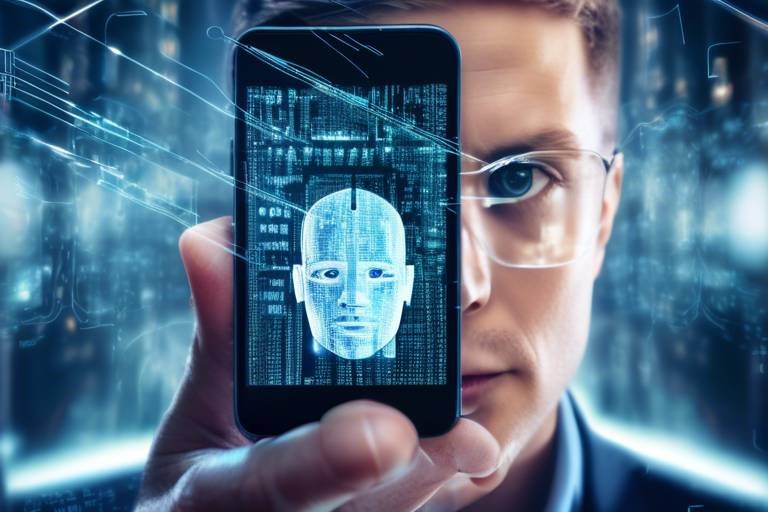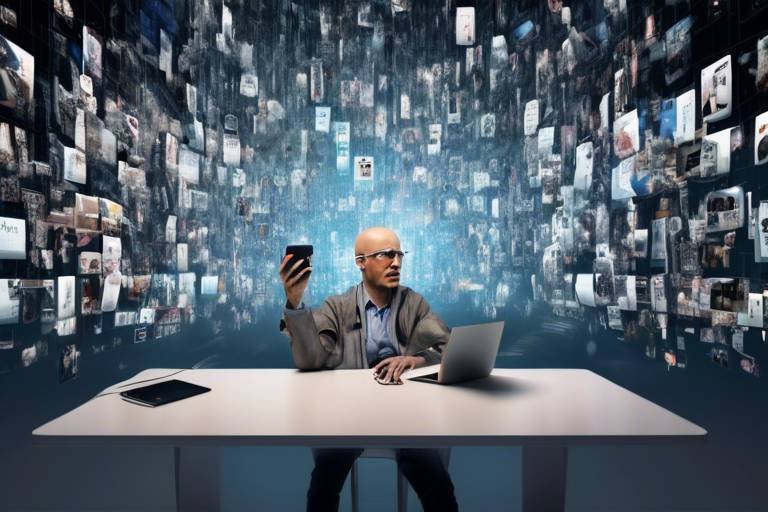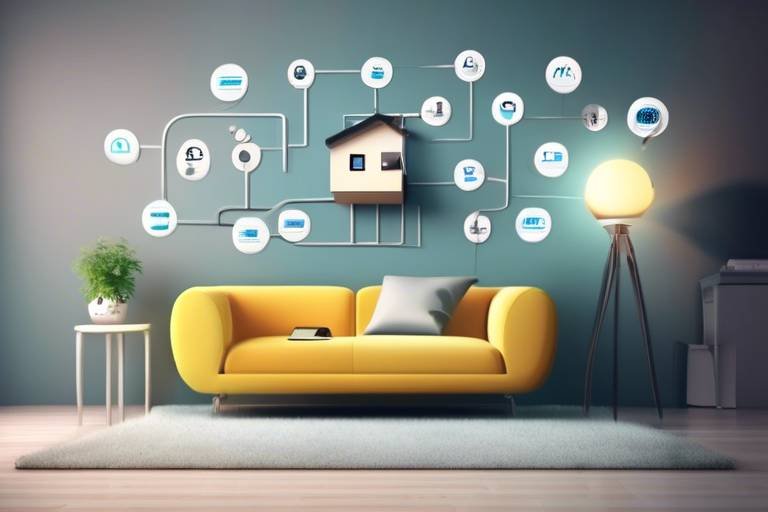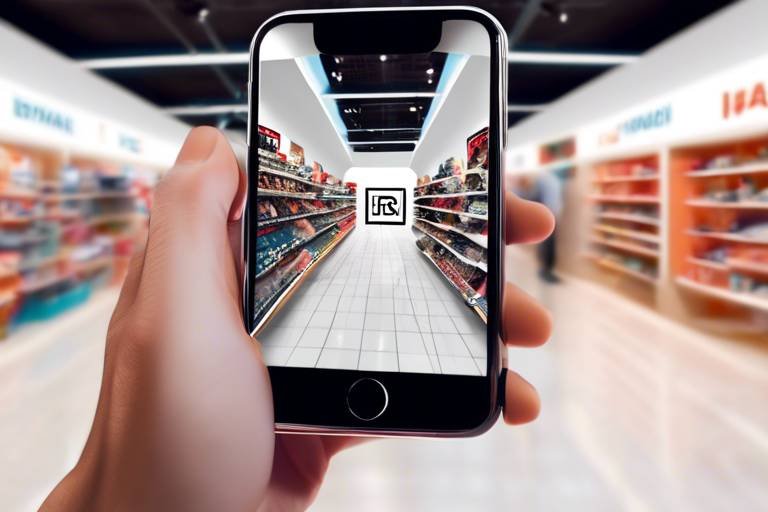The Impact of Technology on Mental Health
In today's fast-paced world, technology is woven into the fabric of our daily lives. From the moment we wake up to the sound of our smartphones buzzing with notifications to the time we drift off, often while scrolling through social media, technology is ever-present. But have you ever paused to consider how this constant connectivity affects our mental health? It's a double-edged sword, really. On one side, technology offers incredible tools and resources that can enhance our well-being, while on the other, it poses significant risks that can lead to anxiety and depression. This article explores how technology influences mental health, examining both its positive and negative effects, and discussing the implications for individuals and society as a whole.
Let’s kick things off by shining a light on the positive aspects of technology. One of the most remarkable benefits is the access it provides to mental health resources. Imagine having a library of self-help articles, guided meditations, and therapy sessions just a click away! Technology can enhance mental health by:
- Providing access to online therapy and counseling services.
- Creating support networks through social media and forums.
- Offering mental health apps that help track moods and provide coping strategies.
These tools foster connections among individuals who may feel isolated. They create communities where people can share their experiences and support one another, making the journey of mental health management a little less lonely. It’s like having a safety net that’s always there, ready to catch you when you fall.
However, it's crucial to acknowledge that excessive use of technology can lead to adverse effects on mental health. Have you ever felt that twinge of anxiety when you realize you’ve spent hours glued to your screen? It’s not just you. Studies show that prolonged screen time can lead to feelings of anxiety and depression, particularly among younger populations. The key here is understanding these risks to maintain a healthy relationship with our digital devices.
Social media platforms, while great for connecting with friends, can also have a dark side. The constant barrage of perfectly curated images can lead to unhealthy comparisons, leaving individuals feeling inadequate. Have you ever caught yourself scrolling through someone’s vacation photos and felt a pang of jealousy? This can significantly impact self-esteem, making it essential to approach social media mindfully.
One of the most alarming issues related to technology is cyberbullying. The anonymity of the internet can embolden individuals to say hurtful things they might never say in person. The consequences can be devastating, leading to severe emotional distress and even long-term psychological effects. It's a harsh reality that we must confront as a society. We need to foster a digital environment that promotes kindness and respect.
On a brighter note, online communities can provide vital support for individuals struggling with mental health issues. These groups create a safe space for sharing feelings and experiences, reminding us that we’re not alone in our struggles. Connecting with others who understand what you’re going through can be incredibly empowering. It’s like finding a friend in the vast sea of the internet who gets you.
The rise of teletherapy and mental health apps has transformed access to care. Imagine being able to speak to a therapist from the comfort of your own home! This convenience is a game-changer, particularly for those living in remote areas or those who may feel intimidated by traditional therapy settings. Digital solutions are making mental health care more accessible than ever before, breaking down barriers and stigma associated with seeking help.
As we’ve discussed, technology has both its perks and pitfalls. Taking breaks from technology can significantly improve mental health. A digital detox isn’t just a trendy phrase; it’s a necessary practice for recharging our mental batteries. Disconnecting allows us to reconnect with ourselves and the world around us. It’s like hitting the reset button on our brains.
Implementing a digital detox requires planning and commitment. Here are some practical strategies to help you reduce screen time:
- Set specific times for checking emails and social media.
- Establish tech-free zones in your home, like the dining room or bedroom.
- Engage in offline activities, such as reading or going for a walk.
By consciously setting boundaries, you can reclaim your time and improve your overall well-being. It’s about creating a healthier balance in your life.
Awareness of technology overuse is essential for maintaining mental health. Some key signs to look for include:
- Feeling anxious or irritable when you can’t access your devices.
- Neglecting face-to-face relationships in favor of online interactions.
- Experiencing sleep disturbances due to late-night screen time.
Recognizing these signs encourages proactive measures for healthier tech habits. After all, our mental health deserves just as much attention as our online presence.
Q: How can I tell if my technology use is affecting my mental health?
A: Look for signs such as increased anxiety, irritability, or feelings of isolation. If you notice these symptoms, it might be time to reassess your digital habits.
Q: What are some quick ways to start a digital detox?
A: Start small by designating certain times of day as tech-free. Gradually increase these periods as you become more comfortable with disconnecting.
Q: Are there any apps that can help with mental health?
A: Yes! Numerous apps focus on mindfulness, mood tracking, and therapy resources that can be incredibly beneficial.
Q: Can social media be beneficial for mental health?
A: Absolutely! When used mindfully, social media can foster connections and provide support. It’s all about balance.

The Positive Effects of Technology
In today's fast-paced world, technology has become an integral part of our daily lives. It has transformed how we communicate, learn, and even manage our mental health. One of the most significant benefits of technology is its ability to enhance mental well-being by providing access to a wealth of resources that were previously out of reach for many. Imagine having a therapist at your fingertips or a supportive community that understands your struggles—this is the power of technology!
Firstly, technology has opened up avenues for access to mental health resources. With just a few clicks, individuals can access informative articles, videos, and podcasts that discuss various mental health topics. This wealth of information empowers people to educate themselves about their mental health, fostering a sense of control and understanding. Furthermore, platforms like mental health apps offer guided meditations, mood tracking, and cognitive behavioral therapy exercises, making it easier for users to manage their mental health on their own terms.
Moreover, technology facilitates the creation of support networks. Online forums and social media groups provide safe spaces for individuals to share their experiences and seek advice from others who may be going through similar challenges. For instance, platforms like Reddit or Facebook host numerous groups dedicated to mental health discussions, where members can offer encouragement and share coping strategies. This sense of community can combat feelings of isolation and loneliness, which are often prevalent in those struggling with mental health issues.
Additionally, the rise of teletherapy has revolutionized access to mental health care. No longer do people need to travel long distances to see a therapist; they can connect with professionals from the comfort of their homes. This convenience is especially beneficial for those living in rural areas or for individuals with mobility issues. Teletherapy not only reduces barriers to access but also allows for more flexible scheduling, making it easier for people to prioritize their mental health.
In summary, the positive effects of technology on mental health are profound. From enhancing access to resources and support networks to revolutionizing therapy, technology has become a crucial ally in the pursuit of mental well-being. However, while we celebrate these advancements, it’s essential to remain mindful of how we interact with technology to ensure that we reap its benefits without falling prey to its potential pitfalls.

The Negative Effects of Technology
In our fast-paced digital world, it’s hard to ignore the negative effects of technology on mental health. While technology has undoubtedly brought about significant advancements and conveniences, it also comes with a dark side that many of us struggle to navigate. Imagine being constantly bombarded with notifications, messages, and updates—it's like trying to drink from a fire hose! This overwhelming influx of information can lead to a range of mental health issues, including anxiety, depression, and social isolation.
One of the most pressing concerns is the impact of excessive screen time. Studies have shown that spending too much time glued to screens can disrupt sleep patterns, increase feelings of loneliness, and even exacerbate existing mental health conditions. Picture this: you’re lying in bed, scrolling through your phone instead of sleeping. The blue light emitted by your device tricks your brain into thinking it’s still daytime, leading to poor sleep quality. This, in turn, can create a vicious cycle where lack of sleep contributes to heightened anxiety levels, making it even harder to disconnect.
Moreover, the constant comparison culture fostered by social media platforms can lead to lower self-esteem and increased feelings of inadequacy. Have you ever found yourself scrolling through your feed, feeling like everyone else is living their best life while you’re just trying to get through the day? This comparison trap can be detrimental to your mental well-being. It's essential to recognize that social media often presents a curated version of reality, highlighting the best moments while concealing the struggles and challenges that everyone faces.
Another alarming issue is cyberbullying, which has become increasingly prevalent in our digital age. The anonymity of the internet can embolden individuals to engage in harmful behavior that they might not exhibit in face-to-face interactions. Victims of cyberbullying often experience severe emotional distress, leading to feelings of isolation, depression, and even suicidal thoughts. The consequences of online harassment can be devastating and long-lasting, making it crucial for us to address this issue head-on.
Despite these challenges, it’s important to remember that technology can also serve as a lifeline for many. Online support groups and communities can provide essential resources and connections for those struggling with mental health issues. However, the key lies in finding a balance. Recognizing when technology is becoming a source of stress rather than support is vital for maintaining mental health.
In conclusion, while technology has the potential to enhance our lives, it’s essential to be aware of its negative effects. By understanding the risks associated with excessive use and taking proactive steps to mitigate these impacts, we can foster a healthier relationship with our digital devices. Remember, it’s all about balance—just like a seesaw, both sides need to be level for it to function properly.
- What are the signs of technology overuse? Symptoms may include anxiety when not using devices, sleep disturbances, and neglecting real-life relationships.
- How can I reduce my screen time? Set specific times for device usage, engage in offline activities, and establish tech-free zones in your home.
- Is social media harmful to everyone? While it can have negative effects, its impact varies from person to person, depending on their usage patterns and mental health status.

In today's digital age, social media has become an integral part of our lives. It's where we connect, share, and express ourselves. However, this constant exposure to curated lives can have a profound impact on our self-esteem. Have you ever found yourself scrolling through your feed, feeling a twinge of envy or inadequacy? You're not alone. Many individuals experience these feelings as they compare their everyday realities to the highlight reels presented by others online.
Social media platforms, while providing a space for connection, can also serve as a double-edged sword. On one hand, they can foster community and support; on the other, they can lead to feelings of isolation and low self-worth. The phenomenon of social comparison is particularly prevalent. Users often compare their lives, looks, and achievements to those of their peers or influencers, which can lead to detrimental effects on mental health. This comparison can create a distorted sense of reality, where one feels they must constantly measure up to unrealistic standards.
Research has shown that excessive social media use can correlate with feelings of anxiety and depression. When users are bombarded with images of perfection, they may start to internalize the belief that they are not good enough. This can manifest in various ways, including:
- Lowered self-esteem: Constantly comparing oneself to others can diminish one's self-worth.
- Increased anxiety: The fear of missing out (FOMO) can lead to heightened anxiety levels.
- Social isolation: Paradoxically, while social media connects us, it can also make us feel more alone.
Moreover, the pressure to present a perfect image online can lead to a cycle of inauthenticity. Many users feel compelled to edit their photos or exaggerate their experiences to gain likes and validation. This not only distorts reality but can also create a disconnect between one's online persona and true self, further complicating their self-image.
So, how can we navigate this complex landscape? It's essential to cultivate a healthy relationship with social media. Here are a few strategies:
- Limit exposure: Set boundaries on how much time you spend on social media platforms.
- Curate your feed: Follow accounts that inspire and uplift you rather than those that trigger negative feelings.
- Practice self-compassion: Remind yourself that everyone has struggles, even if they don’t show them online.
In conclusion, while social media can offer valuable connections and support, it’s crucial to be aware of its potential impact on self-esteem. By taking proactive steps to manage our online presence, we can protect our mental well-being and foster a more positive self-image.
Q: How can social media affect my mental health?
A: Social media can lead to feelings of inadequacy, anxiety, and depression due to constant comparisons and the pressure to present a perfect image.
Q: What are some signs that social media is negatively impacting my self-esteem?
A: Signs include feeling anxious about your online presence, comparing yourself to others frequently, and feeling worse after using social media.
Q: How can I improve my relationship with social media?
A: You can limit your exposure, curate your feed to include positive influences, and practice self-compassion.

In today’s digital age, cyberbullying has emerged as a significant threat to mental health, especially among young people. Unlike traditional bullying, which often occurs face-to-face, cyberbullying can happen at any time and from anywhere. The anonymity provided by the internet can embolden bullies, making it easier for them to harass their victims without facing immediate consequences. This pervasive issue can lead to severe emotional distress, anxiety, and even depression for those targeted.
The consequences of cyberbullying extend beyond immediate emotional turmoil. Victims often experience a range of psychological effects, including feelings of isolation, low self-esteem, and heightened stress levels. In fact, studies have shown that victims of cyberbullying are more likely to report symptoms of anxiety and depression compared to their peers who are not bullied. This emotional impact can be likened to a storm brewing inside – the longer it goes unchecked, the more destructive it can become.
To illustrate the gravity of this issue, let’s take a look at some alarming statistics:
| Statistic | Percentage |
|---|---|
| Victims of Cyberbullying | 15% - 20% |
| Students who experience depression due to cyberbullying | 30% - 40% |
| Those who have considered suicide due to online harassment | 5% - 10% |
These numbers are not just statistics; they represent real lives affected by the insidious nature of online harassment. The emotional scars left by cyberbullying can linger long after the incidents have occurred, affecting academic performance, social interactions, and overall quality of life. Victims may withdraw from social activities, leading to further isolation and exacerbating their mental health struggles.
It’s crucial to understand that the impact of cyberbullying is not limited to the individual. Families, friends, and even entire communities can feel the ripple effects. Parents may experience helplessness and frustration, while peers might struggle with knowing how to support their friends. The collective mental health of a community can be undermined when cyberbullying is prevalent, creating an environment of fear and anxiety.
In conclusion, addressing the issue of cyberbullying is paramount for fostering a healthier digital environment. Awareness, education, and open communication are essential tools in combating this modern menace. By equipping individuals with the knowledge and support they need, we can help mitigate the damaging effects of cyberbullying and promote a culture of kindness and respect online.
Frequently Asked Questions
- What is cyberbullying? Cyberbullying is the act of harassing, threatening, or humiliating someone through digital means, such as social media, text messages, or online forums.
- How can I recognize if someone is a victim of cyberbullying? Signs may include withdrawal from social activities, sudden changes in mood, and a decline in academic performance.
- What should I do if I witness cyberbullying? It's important to report the behavior to the appropriate authorities, whether it's a school official or a social media platform, and support the victim.

In today's fast-paced digital world, the significance of online support groups cannot be overstated. These virtual communities serve as lifelines for individuals grappling with various mental health challenges. Imagine being in a room filled with people who genuinely understand your struggles, even if that room is a chat room or a forum. That's the magic of online support groups—they create a safe space where individuals can share their experiences, seek advice, and find comfort in knowing they are not alone.
One of the most remarkable aspects of these groups is their accessibility. No longer do individuals have to navigate the often daunting task of finding local support. With just a few clicks, anyone can connect with like-minded individuals from around the globe, sharing insights and encouragement. This global reach means that people can find support regardless of their geographical location, breaking down barriers that might have previously hindered their journey to recovery.
Furthermore, online support groups can be tailored to meet specific needs. Whether someone is dealing with anxiety, depression, addiction, or grief, there are specialized groups dedicated to those issues. This specialization allows for more focused discussions, where members can share relevant coping strategies, resources, and personal stories that resonate deeply with one another.
However, it's essential to approach online support groups with a discerning eye. While they can provide invaluable support, not all groups are created equal. Some may lack moderation, leading to the spread of misinformation or negative influences. Therefore, individuals should seek out groups that are well-facilitated and promote a positive, respectful environment. Here are a few tips for finding a supportive online community:
- Look for groups with active moderation to ensure a safe space.
- Read reviews or testimonials from current or former members.
- Engage in a few discussions to gauge the group's tone and supportiveness.
In addition to emotional support, many online groups also offer resources such as articles, videos, and workshops that can enhance understanding and coping mechanisms. These resources can be instrumental in providing members with tools to manage their mental health more effectively. For instance, a group focused on anxiety may share guided meditation videos or articles on cognitive-behavioral techniques that have proven helpful.
In conclusion, online support groups play a crucial role in the mental health landscape. They offer a unique blend of accessibility, community, and resources that can significantly enhance an individual’s journey towards healing. As we navigate the complexities of mental health, these digital havens remind us that connection is just a click away, fostering a sense of belonging and understanding that is often hard to find in our immediate surroundings.
Q: Are online support groups safe?
A: While many online support groups are safe and moderated, it's essential to choose reputable groups and be cautious about sharing personal information.
Q: How do I find the right online support group for me?
A: Look for groups that focus on your specific issue, have active moderation, and check reviews or testimonials from other members.
Q: Can online support groups replace therapy?
A: Online support groups can complement therapy but should not replace professional mental health treatment.

In recent years, the landscape of mental health care has undergone a dramatic transformation, largely driven by advancements in technology. The rise of teletherapy and various mental health apps has made it easier than ever for individuals to access the support they need. Imagine being able to connect with a licensed therapist from the comfort of your own home, or having a mental health app that provides you with coping strategies and mindfulness exercises at your fingertips. This is not just a dream; it’s the new reality for many people seeking help.
Teletherapy, also known as online therapy or virtual therapy, allows clients to engage in therapeutic sessions via video calls, phone calls, or even chat messaging. This flexibility can be a game-changer for those who may feel anxious about face-to-face interactions or have difficulty accessing traditional therapy due to geographical constraints. With just a few clicks, individuals can schedule appointments that fit into their busy lives, making mental health care more accessible than ever.
Moreover, mental health apps have emerged as powerful tools that complement traditional therapy. These apps often include features such as mood tracking, guided meditations, and cognitive behavioral therapy (CBT) exercises. For instance, an app might prompt users to check in on their mood throughout the day, helping them to identify patterns and triggers. This self-awareness is crucial in managing mental health and can empower users to take proactive steps towards improvement.
| Type of Digital Therapy | Description | Benefits |
|---|---|---|
| Teletherapy | Therapy sessions conducted via video or phone calls | Convenience, accessibility, and comfort |
| Mental Health Apps | Apps offering resources like mood tracking and exercises | Self-management, on-the-go support, and personalized tools |
| Online Support Groups | Virtual communities for sharing experiences and advice | Connection, understanding, and reduced isolation |
However, while digital therapy options present numerous advantages, it’s essential to approach them with a discerning eye. Not every app or online platform is created equal. It’s crucial to look for reputable services that employ licensed professionals and adhere to ethical standards. Additionally, some individuals may find that they prefer the traditional, in-person approach to therapy, highlighting the importance of personal preference in the therapeutic journey.
In summary, the advent of digital therapy options has opened up a world of possibilities for those seeking mental health support. Whether through teletherapy or mental health apps, individuals now have more resources than ever to help them navigate their mental health challenges. As we continue to embrace technology in our daily lives, it's vital to ensure that we use these tools wisely and maintain a balanced approach to our mental well-being.
- What is teletherapy? Teletherapy refers to therapy sessions conducted online through video calls, phone calls, or messaging, making mental health care more accessible.
- Are mental health apps effective? Many mental health apps can be effective tools for self-management and support, but it's essential to choose reputable ones that offer evidence-based practices.
- Can I replace traditional therapy with online therapy? While online therapy can be a great alternative, it's important to assess your personal needs and preferences, as some may benefit more from in-person interactions.
- How do I find a qualified online therapist? Look for licensed professionals through reputable platforms that verify their credentials and offer user reviews.
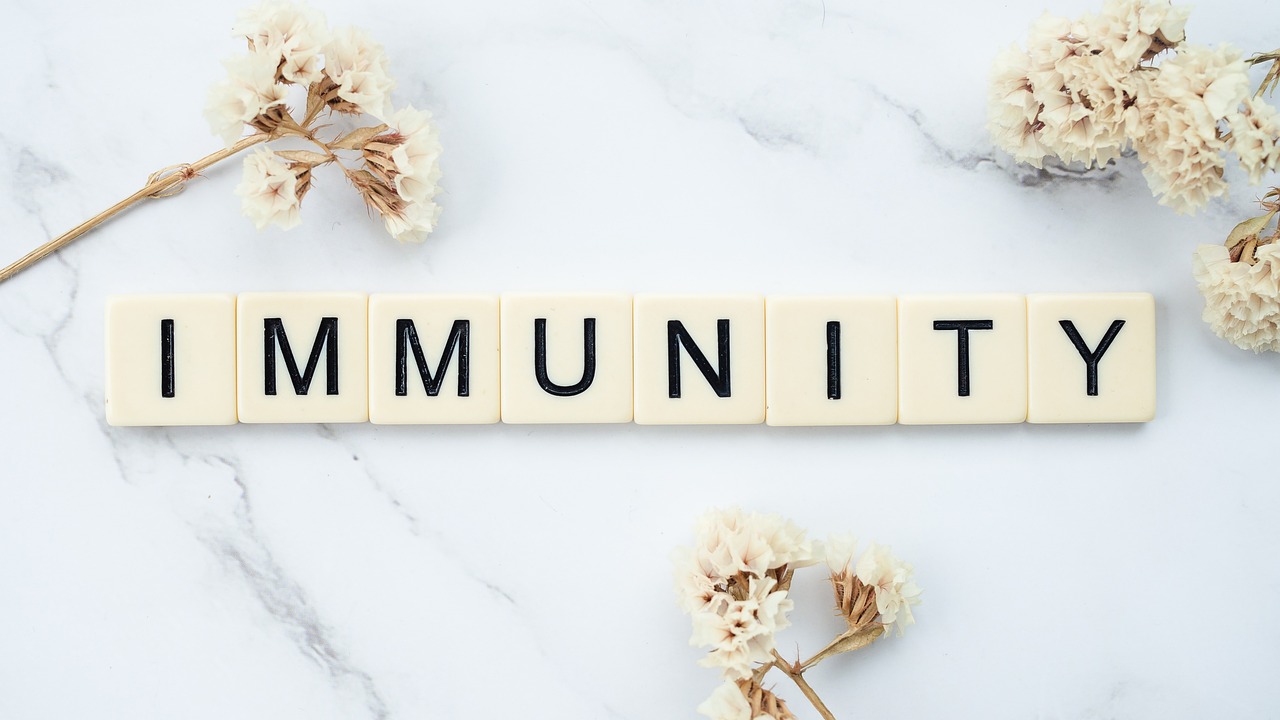
The modern world is undeniably intertwined with technology, and while it offers us countless benefits, it can also lead to overwhelming stress and anxiety. This is where the concept of a digital detox comes into play. A digital detox is a period during which an individual refrains from using electronic devices, particularly smartphones, computers, and social media. The need for such a detox arises from the constant barrage of notifications, updates, and the pressure to stay connected. Imagine trying to enjoy a beautiful sunset while your phone buzzes incessantly; that’s the reality many of us face daily. By stepping back from our screens, we can reclaim our time, our focus, and ultimately, our mental health.
One of the most significant benefits of a digital detox is the improvement in mental clarity. When we disconnect, we give our minds a chance to breathe and reset. Think about it: how often do you find yourself scrolling through your phone instead of engaging in a meaningful conversation or enjoying a hobby? This constant distraction can lead to decreased productivity and heightened feelings of anxiety. By taking a step back, we allow ourselves to engage more fully with the world around us, fostering deeper connections with friends and family. Studies have shown that individuals who regularly disconnect from technology report feeling more present and engaged in their daily lives.
Moreover, a digital detox can significantly enhance our emotional well-being. Many people find themselves caught in the web of social media, where the pressure to present a perfect life can lead to feelings of inadequacy and low self-esteem. During a detox, individuals often experience a newfound sense of freedom. They can focus on self-care activities like reading, exercising, or even meditating without the constant pull of their devices. This time away from screens allows for reflection and personal growth, which are crucial for maintaining a healthy mindset.
Setting boundaries with technology is essential, and a digital detox can be the first step in this process. It’s not just about quitting technology altogether; it’s about creating a healthier relationship with it. Consider implementing a regular schedule where you allocate specific times for device usage. For instance, you might decide to check your emails only three times a day or to avoid screens during meals. These small changes can lead to significant improvements in your overall mental health.
In the hustle and bustle of our digital lives, it's easy to overlook the signs that we need a break. Here are a few indicators that it might be time for a digital detox:
- Feeling anxious or overwhelmed when you can't access your devices.
- Experiencing difficulty concentrating on tasks.
- Having trouble sleeping due to late-night screen time.
- Noticing a decline in your mood after spending time online.
Recognizing these signs is the first step toward taking action. By prioritizing your mental health and committing to a digital detox, you can pave the way for a more balanced and fulfilling life. Remember, it’s about quality over quantity; the time you spend offline can be more enriching than any online interaction.
Q: How long should a digital detox last?
A: The duration of a digital detox can vary from person to person. Some may find a weekend sufficient, while others might benefit from a week or more. The key is to choose a timeframe that feels right for you.
Q: Will I miss out on important updates during a digital detox?
A: While you may miss some updates, most information can wait. Prioritizing your mental health is essential, and you can always catch up on news and social media after your detox.
Q: How can I stay accountable during my digital detox?
A: Consider involving friends or family members in your detox. Share your goals with them, and they can help keep you accountable. You could even challenge each other to stay off devices for a set period.
Q: What activities can I do instead of using technology?
A: Use this time to explore hobbies, read books, go for walks, or spend quality time with loved ones. Engaging in physical activities or creative pursuits can be incredibly fulfilling.

In our fast-paced, technology-driven world, taking a break from screens can feel like a daunting task. However, implementing a digital detox is crucial for maintaining our mental health and overall well-being. So, how can we effectively disconnect without feeling overwhelmed? Here are some strategies that can help you navigate the digital detox journey.
First and foremost, it’s essential to set clear boundaries for your technology use. This means defining specific times when you will engage with your devices and when you will unplug. For example, you might decide to avoid screens during meals or an hour before bedtime. By establishing these boundaries, you can create a healthier relationship with technology and reduce the compulsive urge to check notifications.
Another effective strategy is to designate tech-free zones in your home. Consider creating a sanctuary where devices are not allowed, such as your bedroom or dining area. This space can serve as a reminder to be present and engaged with those around you, fostering deeper connections and improving your mental state. Imagine enjoying a meal without the distraction of notifications—what a refreshing change!
Additionally, you can use technology to your advantage by employing apps that promote mindfulness and limit screen time. For instance, apps like Forest or Stay Focused can help you track your usage and encourage you to take breaks. This might sound ironic, but sometimes the best way to manage your screen time is by using technology designed to help you step away from it.
Moreover, incorporating hobbies and activities that don’t involve screens can significantly enhance your digital detox experience. Whether it’s reading a book, going for a hike, or picking up a new hobby like painting or gardening, engaging in offline activities can help you rediscover joy outside the digital realm. Think of it as a treasure hunt for your passions—what gems will you uncover when you step away from the screen?
Finally, consider doing a digital detox challenge with friends or family. Having a support system can make the process more enjoyable and motivating. You could set a goal to go a weekend without screens or have a “no-phone” day each week. Sharing your experiences and challenges with others can provide encouragement and accountability, making the detox feel less isolating.
In summary, a digital detox doesn’t have to be an overwhelming task. By setting clear boundaries, creating tech-free zones, using helpful apps, engaging in offline activities, and involving your loved ones, you can reclaim your time and improve your mental health. Remember, the goal is to find balance and ensure that technology serves you, rather than the other way around.
Q: How long should a digital detox last?
A: The duration of a digital detox can vary based on personal needs. Even a few hours can be beneficial, but many find that a weekend or a week offers more significant mental health benefits.
Q: Will I miss important notifications during a digital detox?
A: It's possible, but you can choose to inform friends and family about your detox plans. Consider setting up an auto-reply for urgent matters to ensure you don’t miss anything critical.
Q: Can I still use technology during a digital detox?
A: Yes! A digital detox doesn’t mean complete disconnection. It’s about reducing unnecessary screen time and being more intentional with your technology use.
Q: What are the signs that I need a digital detox?
A: If you find yourself feeling anxious when away from your devices, experiencing sleep disturbances, or struggling to focus, these could be signs that a digital detox is necessary.

In our fast-paced digital world, it’s easy to get lost in the sea of notifications, social media updates, and endless streaming options. But how do you know when your relationship with technology has crossed the line from beneficial to detrimental? Recognizing the signs of technology overuse is crucial for maintaining your mental health and ensuring that your digital habits serve you rather than control you. Awareness is the first step towards a healthier balance.
One of the most common indicators of technology overuse is the feeling of anxiety when you are away from your devices. Do you find yourself constantly checking your phone for messages or notifications, even when you know there’s nothing new? This compulsive behavior can lead to heightened stress levels and a sense of disconnection from the real world. It’s as if your smartphone has become an extension of your identity, and stepping away feels like losing a part of yourself.
Another sign to look out for is a decrease in face-to-face interactions. If you notice that your social life is primarily conducted through screens rather than in person, it might be time to reevaluate your tech habits. While online communication can be convenient, it often lacks the depth and warmth of real-life interactions. Consider this: how often do you choose to text someone instead of picking up the phone or meeting them for coffee? If your answer leans heavily towards the digital, it’s a red flag.
Physical symptoms can also indicate that you’re spending too much time glued to your screens. Headaches, eye strain, and poor posture are all common complaints among heavy technology users. If you find yourself experiencing these issues regularly, it might be time to take a step back and assess your screen time. Remember, your body is your most important tool, and neglecting it can have serious long-term consequences.
Moreover, consider how technology affects your sleep patterns. Are you scrolling through your social media feeds late into the night, only to wake up feeling groggy and irritable? The blue light emitted by screens can disrupt your circadian rhythm, making it harder to fall asleep and stay asleep. If you’re waking up feeling exhausted, it may be a sign that your tech habits are interfering with your rest.
Lastly, reflect on your emotional state. Are you feeling more irritable or depressed than usual? Excessive technology use can lead to feelings of isolation and inadequacy, especially when comparing your life to the carefully curated images you see online. It’s essential to recognize when these feelings start to creep in, as they can spiral into more significant mental health challenges if left unchecked.
To summarize, recognizing the signs of technology overuse can empower you to take control of your digital life. Look out for:
- Constant anxiety when away from devices
- Decreased face-to-face interactions
- Physical symptoms like headaches and eye strain
- Disrupted sleep patterns
- Increased feelings of irritability or depression
By identifying these signs early, you can make informed decisions about your technology use and prioritize your mental well-being.
Q: How can I effectively reduce my screen time?
A: Start by setting specific limits for daily screen use. Use apps that track your usage and encourage breaks. Establish tech-free zones in your home, especially in the bedroom.
Q: What are some alternative activities to replace screen time?
A: Consider reading a book, going for a walk, practicing a hobby, or spending time with friends and family in person. Engaging in physical activities can also be a great way to disconnect.
Q: Is it possible to use technology in a healthy way?
A: Absolutely! Focus on using technology to enhance your life rather than detract from it. Engage with positive content, use apps for mindfulness, and connect with supportive online communities.
Frequently Asked Questions
- How does technology positively impact mental health?
Technology offers various resources that can significantly enhance mental health. From online support groups to mental health apps, individuals can access therapeutic tools and connect with others who understand their struggles. This connectivity fosters a sense of belonging and provides valuable information that can lead to improved well-being.
- What are the negative effects of excessive technology use?
While technology has its perks, overindulgence can lead to serious mental health issues. Increased screen time is linked to anxiety, depression, and social isolation. It's crucial to be mindful of how much time we spend online and the types of content we consume to maintain a healthy mental state.
- How does social media affect self-esteem?
Social media can be a double-edged sword. On one hand, it allows for connection; on the other, it often leads to unhealthy comparisons. Users might find themselves measuring their worth against curated images and lifestyles, which can negatively impact self-esteem and lead to feelings of inadequacy.
- What is cyberbullying and how does it affect mental health?
Cyberbullying involves harassment through digital platforms, and its consequences can be devastating. Victims often experience severe emotional distress, leading to anxiety, depression, and even suicidal thoughts. It's vital to address this issue and promote a safer online environment.
- Can online support groups really help?
Absolutely! Online support groups provide a safe space for individuals facing similar challenges. Sharing experiences and receiving encouragement from others can be incredibly therapeutic, allowing people to feel less alone in their struggles.
- What are digital therapy options?
Digital therapy options, like teletherapy and mental health apps, have revolutionized access to care. They offer flexibility and convenience, allowing individuals to seek help from the comfort of their homes. These tools make mental health support more accessible than ever before.
- Why is a digital detox important?
A digital detox is essential for mental clarity and emotional well-being. Taking breaks from screens can reduce stress, improve mood, and foster real-life connections. It’s a way to reset and reconnect with oneself and the world around us.
- What strategies can help with a digital detox?
Effective digital detox strategies include setting specific screen time limits, scheduling tech-free hours, and engaging in offline activities. Planning and commitment are key to successfully reducing screen time and enhancing overall well-being.
- What signs indicate technology overuse?
Signs of technology overuse can include feelings of anxiety when not connected, neglecting responsibilities, and experiencing sleep disturbances. Being aware of these signs can help individuals take proactive measures to establish healthier tech habits.







